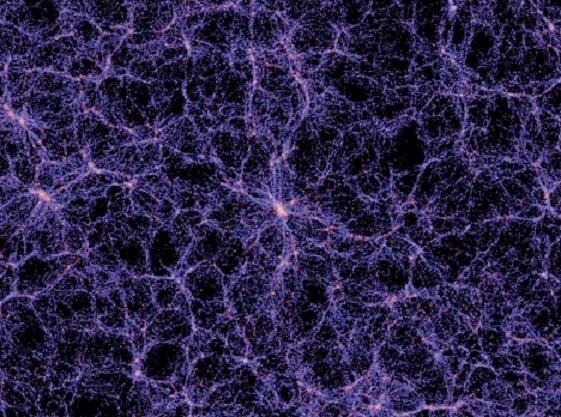
Stephen Smith: Greater and Greater Attractors.
Galaxy clusters are being pulled by a force emanating from "beyond the horizon" of the universe. Could electrified plasma be the culprit?
An analysis of data provided by the Wilkinson Microwave Anisotropy Probe (WMAP) appears to indicate an unknown gravitational mass lying over the cosmic event horizon. Far past any current instrument's detection ability is something with a force exceeding the combined mass of whole superclusters, inexorably drawing them out into the darkness.
Said Alexander Kashlinsky from NASA's Goddard Space Flight Center: "The distribution of matter in the observed universe cannot account for this motion."
According to astronomers, the universe itself is expanding at an ever accelerating rate. Estimates for the rate of expansion vary, but contemporary theories suggest that galaxies are receding from us because they started out receding from us due to an inflationary event imparted by the Big Bang. Current estimates put the figure at approximately 71 kilometers per second for every 3.3 million light-years. This supposed dilation of space/time is called the Hubble flow, or the Hubble constant.
In the 1960s however, detailed redshift calculations of the galaxies near the Milky Way seemed to show a large-scale motion superposed on the Hubble flow. The Local Group, the Virgo supercluster, the Hydra-Centaurus supercluster, and other galactic superclusters are moving at 600 kilometers per second toward the constellation Centaurus. Scientists describe the motion as "a great river of galaxies" that is flowing into the gravity well of some gigantic gravitational source over 216 million light-years away. The massive structure is known as the Great Attractor.
The Great Attractor is thought to be composed of dark matter because it cannot be seen with any telescope. Astronomical observations uncovered a galaxy cluster known as Abell 3627 in the general vicinity, but found ten times too little visible matter for the effect. It is interesting that astrophysical studies demonstrate unexpected movement whenever new instruments with improved vision are implemented.
Almost from the start of modern astronomy it was found that the Andromeda galaxy is hurtling toward the Milky Way at over 320,000 kilometers per hour. Consensus opinion states that only gravity can exert the force necessary for Andromeda's speed, although there appears to be insufficient luminous matter between the two galaxies to account for it. A mass of ten Milky Way galaxies would be required to accelerate Andromeda, scientists postulate, but it remains unseen to this day.














2 comments:
That picture looks freakishly like pictures I've seen of neurons in the brain.
@ Pleroma:
I agree, and aren't neurons primarily electrical in their contact and communication with each other?
If astronomy was "fresh" out of the box and had no preconceived notions (an impossibility, I grant you) and began the study of astronomy from scratch, today, with all the electromagnetism evident in space, both near and far, is there any question, but that electromagnetism would be given it's due as the central organizing and dynamic force in the Universe?
It's a no brainer:-)
Post a Comment